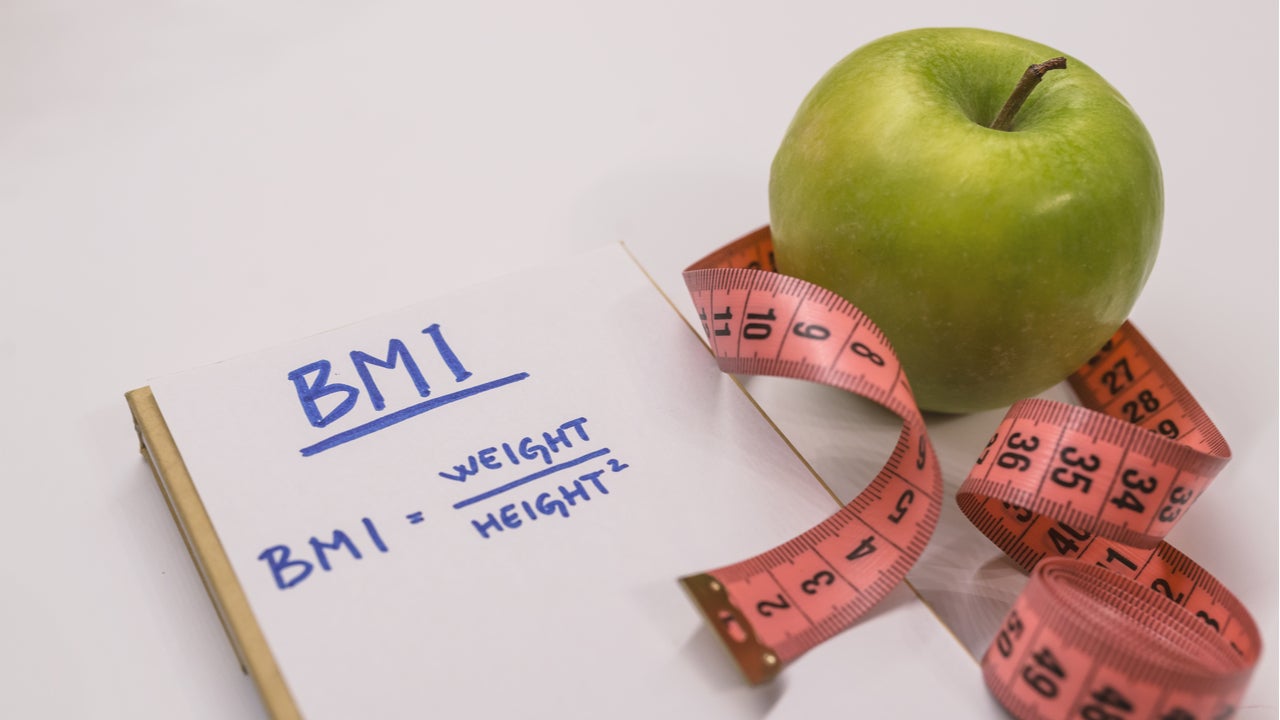
Body mass index (BMI) has long been used as a standard measure for assessing an individual’s overall health. The calculation estimates a person’s body fat content by dividing their weight in kilograms by their height in metres squared, with the resulting metric used to categorise them as underweight, healthy weight, overweight or obese.
Despite its prevalence, clinicians and activists alike have grown increasingly critical of BMI as a metric in recent years. While it may be a quick, cheap and straightforward way to screen an individual’s health, there are several factors BMI does not take into account, leaving it falling rather short of the mark.
Even BMI’s inventor didn’t intend for it to be used to assess the health of individual people, but as a population evaluation tool. BMI does not account for body fat percentage or distribution, both of which can be better indicators of an individual’s health than their weight alone. Plus, having been developed using a small group of white European men, it doesn’t generalise well onto other ethnic groups or sexes.
Yet, BMI is still commonly used in consumer healthtech products to assess users’ health. From smartwatches like the FitBit to popular smartphone platforms such as Noom and even the UK NHS weight loss app, many of these products continue to rely on BMI as a way to chart customers’ health progress.
LaurieAnn Scher is chief clinical strategy officer at Fitscript, a digital health company that developed diabetes self-management app GlucoseZone, which does not incorporate BMI into its design. Scher says the reliance on BMI, not just in healthtech apps but throughout the medical industry, means patients aren’t being given an accurate picture of their own health.
“The fact of the matter is that you’re taking a measure that was created primarily on a white male population and applying it overall to every single population,” she says. “It doesn’t always reflect the population that you’re looking at. For example, a woman with large breasts or big hips would appear to have a higher BMI when in fact they might be healthy. We know what happens then, all the talk in the head and the ridiculous things that people have been doing for eons to change their body weight.”
How well do you really know your competitors?
Access the most comprehensive Company Profiles on the market, powered by GlobalData. Save hours of research. Gain competitive edge.

Thank you!
Your download email will arrive shortly
Not ready to buy yet? Download a free sample
We are confident about the unique quality of our Company Profiles. However, we want you to make the most beneficial decision for your business, so we offer a free sample that you can download by submitting the below form
By GlobalDataThe history of BMI
BMI considers a person to be of normal weight if they score between 18.5 and 25, overweight if they score between 25 and 30 and classes anyone with a BMI of 30 or more as obese. Anyone with a BMI over 40 is considered to be morbidly obese.
The calculation was developed almost 200 years ago by an academic named Adolphe Quetelet. Quetelet was not a physician or a student of medicine, but was known for his sociological work attempting to identify the characteristics of ‘the average man’. Quetelet is also credited as the founder of anthropometry, which includes the racist pseudoscience of phrenology.
Quetelet believed that the mathematical mean of a population was its ideal, and so developed the BMI, a way of quantifying the average man’s weight and so finding an ideal weight for the average man to be. The formula was based solely on the bodies of white French and Scottish participants. For Quetelet, BMI was never intended as a measure of individual body fat, build or health, but as a way of measuring populations. He had designed a metric for the purposes of statistics rather than individual health assessments.
Nesta analyst Lucy Turner says: “There is a wealth of existing BMI data at a population level, which has been collected for decades. This data is useful to get a high-level picture of obesity levels in the UK and to identify trends over times and areas to target work.
“Despite its flaws, research suggests that BMI data does hold up well against other measures used to assess obesity rates on a population level, particularly when it is used alongside other measures.”
Over the following years, BMI – initially called Quetelet’s Index – infiltrated the healthcare infrastructure. BMI is now used by clinicians, insurers, public health bodies and now healthtech apps as a way to assess the health of individual patients and customers.
The flaws in BMI
A 2016 study of over 40,000 people in the International Journal of Obesity found that nearly half the people classified as overweight by BMI, one third of obese people and one fifth of morbidly obese people were metabolically healthy. Meanwhile, one third of people with a normal classification were found to be metabolically unhealthy. The researchers estimated that around 75 million adults in the US were having their health status misclassified on the basis of their BMI.
Furthermore, while poorer health outcomes are associated with higher BMI – such as Type 2 diabetes, cardiovascular conditions and even depression – an individual’s higher weight isn’t strictly the cause of their health condition. For example, the weight gain associated with Type 2 diabetes can be a symptom of insulin resistance, rather than a cause.
BMI also doesn’t measure body composition. Muscle weighs more than fat, so professional athletes and or people who are more muscular may be deemed overweight according to their BMI. Plus, weight concentrated around the middle of the body is associated much more closely with negative health outcomes than weight carried elsewhere in the body – but BMI doesn’t know about an individual person’s figure. It also cannot account for bone density, meaning a person with heavier bones is more likely to have a higher score even if they’re a lower weight.
But perhaps the greatest flaw in BMI is its failure to generalise across racial and ethnic groups. While a person’s ethnicity does not directly determine their bodily metrics, research has indicated that East and South Asian populations can experience weight-correlated negative health outcomes at lower overall body weights than white populations. Several different BMI cut-offs for Asian populations have therefore been suggested, with the US National Institutes of Health (NIH) moving the overweight cut-off point to 23 and the obese cut-off point to 27.5 for this population.
The reverse appears to be true for Black populations. A 2009 study found that Back people had less body fat than white people, even when they had the same BMI and waist measurements. Meanwhile, a 2011 study found that white women with a BMI of 30 or more and a waist circumference of 36 inches or higher were at a greater risk of diabetes, high blood pressure and high cholesterol, whereas Black women with the same bodily composition appeared to be medically healthy. These studies suggest that Black people may be able to live healthily at a higher BMI than white people.
Waist-to-height ratio may be a better metric for healthtech apps
Despite BMI’s troublesome history and flawed application, many healthtech companies still employ the metric as part of apps designed to help patients improve their overall health. But when people use these products, often by their own efforts without the input of a clinician, they may wind up inadvertently focusing on a number which doesn’t actually tell them all that much about how healthy they really are.
Of course, BMI does have its merits. The data is easy to collect, can be gathered at home and is a measurement most people will be familiar with, making it a fairly logical choice for a product developer.
Speaking about the NHS Weight Loss Plan app, a Public Health England spokesperson says: “The app uses the BMI calculator as BMI is the most well-established and used measure of estimating and evaluating the risk of body mass in relation to a range of chronic diseases, including Type 2 diabetes, cardiovascular disease, many cancers, liver and respiratory disease, and Covid-19 severity.
“It is recommended by NICE and is used routinely by healthcare practitioners across the NHS as a primary indicator of whether a person is overweight or living with obesity. It is also the most used, non-invasive way of estimating an individual’s weight.”
But a metric like waist-to-height (WHtR) ratio, waist circumference divided by height, could be far more useful for consumers and just as easy to measure at home – perhaps more so, considering it’s cheaper to buy a tape measure than a set of bathroom scales.
A study from Leeds Beckett University found WHtR to be more accurate than BMI, or other alternative metrics, in identifying obesity.
The researchers gathered whole-body and abdominal fat data from 81 participants using a total body dual energy X-ray absorptiometry (DXA) scanner – a highly accurate way of measuring body composition and fat content, but not particularly accessible to most people. They then compared the data from the DXA scans to five different health predictors: BMI, WHtR, waist circumference (WC), waist-to-hip ratio (WHR) and waist-to-height ratio0.5 (WHtR0.5). The results showed that the best predictor of both whole-body fat percentage and visceral adipose tissue (VAT) in both men and women was waist-to-height ratio (WHtR).
As lead author Dr Michelle Swainson explained at the time: “Carrying fat around the abdominal area has been shown to be an independent predictor of all-cause mortality in men and women. Put simply, it is more important, especially for cardio-metabolic conditions, that your belt notch goes down than the reading on the scales.”








